January 2022
Fig.1
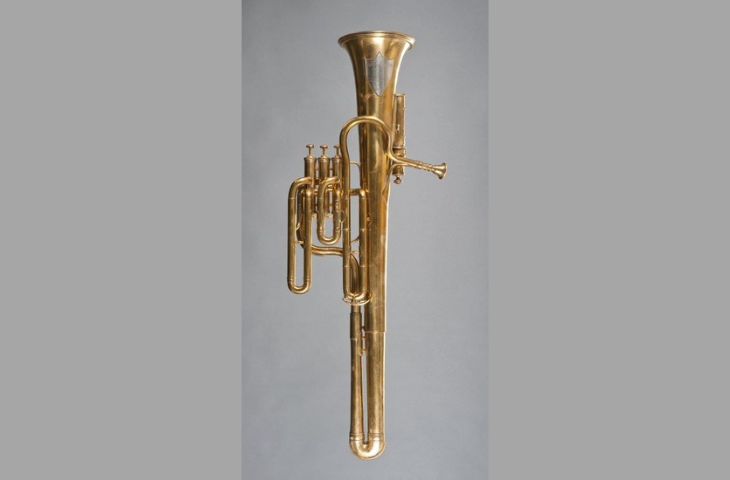
Baritone sudrophone (foreside), François Sudre, Paris, after 1892, inv. 2005.035
Fig.2
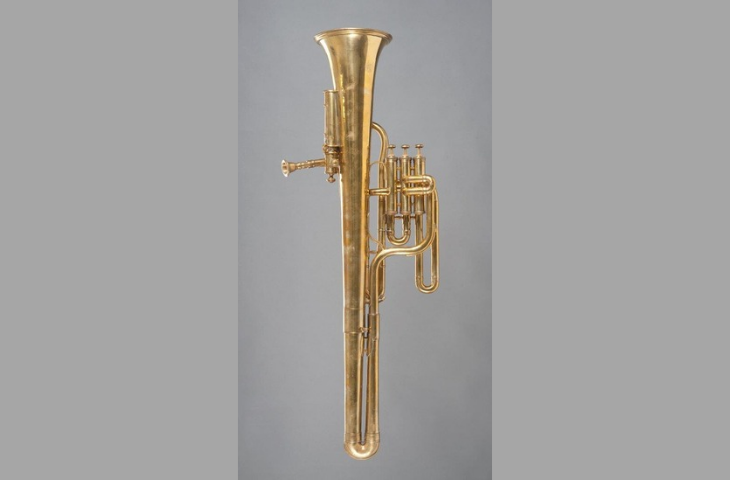
Baritone sudrophone (backside), François Sudre, Paris, after 1892, inv. 2005.035
Fig.3
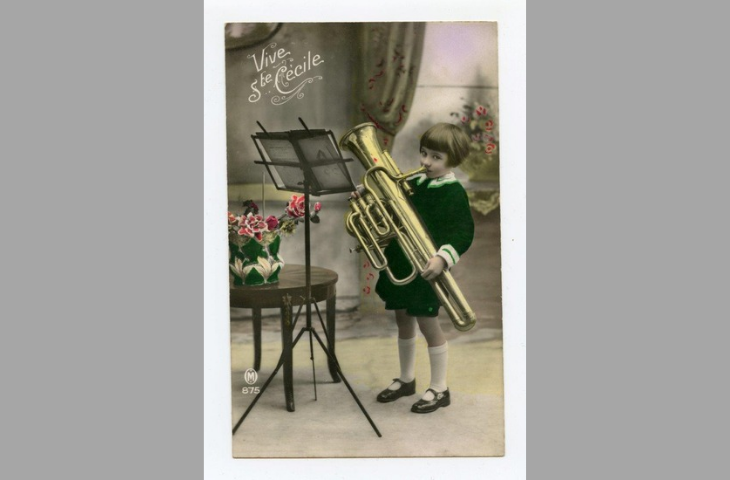
Postcard (bass sudrophone), France, early 20th century
Fig.4
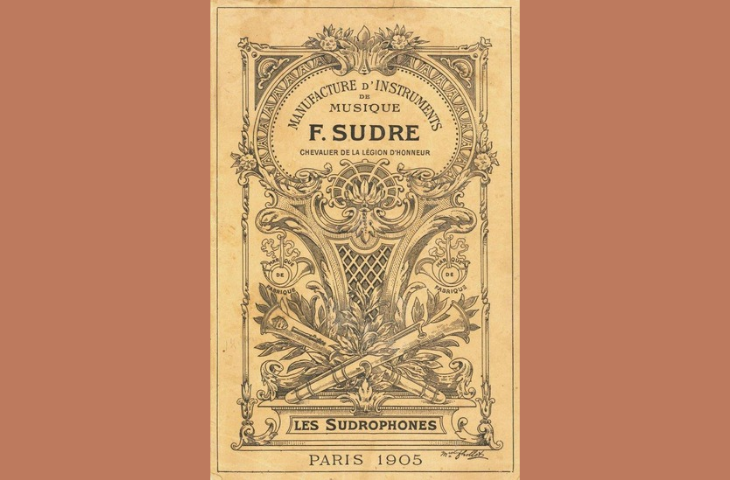
Extracts from the catalogue of the firm F. Sudre, Paris, 1905. With the kind permission of Dirk Arzig.
Fig.5
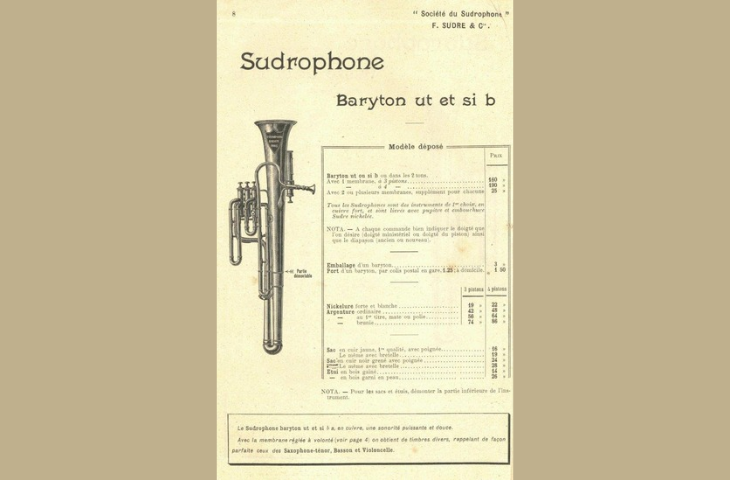
Extracts from the catalogue of the firm F. Sudre, Paris, 1905. With the kind permission of Dirk Arzig.
Fig.6
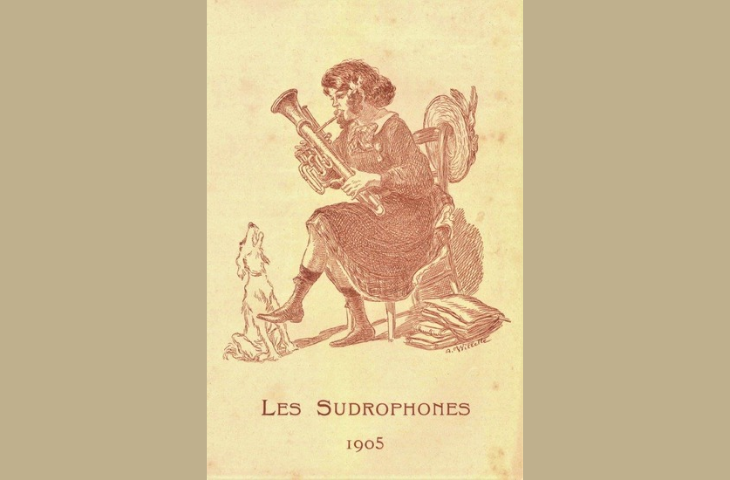
Extracts from the catalogue of the firm F. Sudre, Paris, 1905. With the kind permission of Dirk Arzig.
In search of new sounds
Long before the development of electricity and electronics, various means were devised to modify the timbre of musical instruments or create new sounds. This search for new sounds was particularly intense during the 19th century, a period of great innovation and improvement of all kinds. Many new instrumental voices appeared, such as the saxophone, which everyone knows today, or the sudrophone, which everyone has forgotten.
François Sudre, an emulator of Adolphe Sax?
Inventors generally start with existing instruments that they improve, modify and hybridize according to their own ideas. So did François Sudre (1843-1919), an instrument maker from Carcassonne but settled in Paris in the 1860s. An excellent brass instrument maker, he founded the "Association générale des ouvriers", a factory organised as a cooperative of workers and specialised craftsmen who campaigned for shorter working hours.
In 1892, Sudre filed a patent for the sudrophone. This was actually a whole family of lip-vibrated instruments whose bore - the shape of the air column - was similar to this of the saxhorns dear to Adolphe Sax. Sudre, however, gave them a very typical shape, inspired by the ophicleide, with the main tubes very close together and connected by a U-shaped bow. The valve system is arranged parallel to the bell and offset from it. Sudrophones are produced in various sizes, from soprano to contrabass.
Good vibrations
But the originality of this group of instruments lies in a small, relatively discreet device: a cylinder containing a thin silk membrane that communicates with the inside of the bell via a rectangular opening. This opening can be opened or closed, allowing the film to vibrate or not, according to the will of the player. In the closed position, the sound of the sudrophone does not differ from that of a saxhorn. In the open position, however, the sound is considerably transformed by the vibration of the membrane. This is also the way in which the kazoo works, in which the human voice is transformed by a vibrating membrane. Here, both the degree of opening and the tension of the membrane can be changed in order to vary the timbre. This principle could also be adapted to other instruments such as the cornet, the trumpet and the trombone.
According to its designer, the system could imitate a whole range of instruments such as the saxophone, clarinet, bassoon and string instruments. The Sudre catalogue of 1905 states that the sound of the baritone sudrophone is 'powerful and sweet' and that by adjusting the membrane, various timbres can be obtained that 'perfectly recall those of the tenor saxophone, bassoon and cello'. Another advantage - especially the economic one - put forward by the inventor was the ability for an orchestra to vary its sound without increasing the number of musicians.
Musical Darwinism?
This ambitious programme was never really realised. This kind of instrument was not as successful as expected and did not become indispensable. Even though Sudre was awarded a Grand Prix at the 1905 World Exhibition in Liège, where he presented his family of sudrophones, a kind of natural selection took place and the branch died out by itself. Competition with other instrumental families must have played a role, and these instruments probably did not meet the taste of the musicians and the public. It has to be said that - at least to our 21st century ears - the sound of the sudrophone is closer to a defective instrument with a few air leaks than to a Stradivarius cello...
Text: Géry Dumoulin